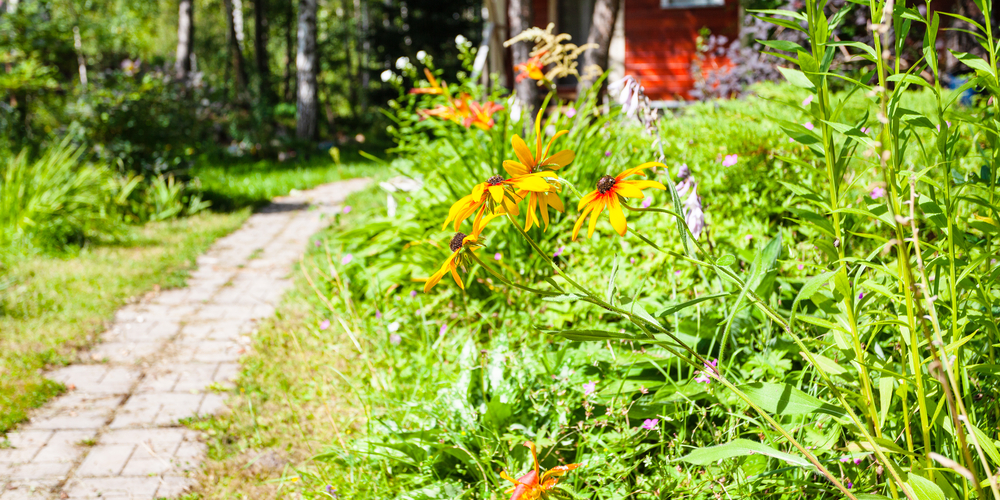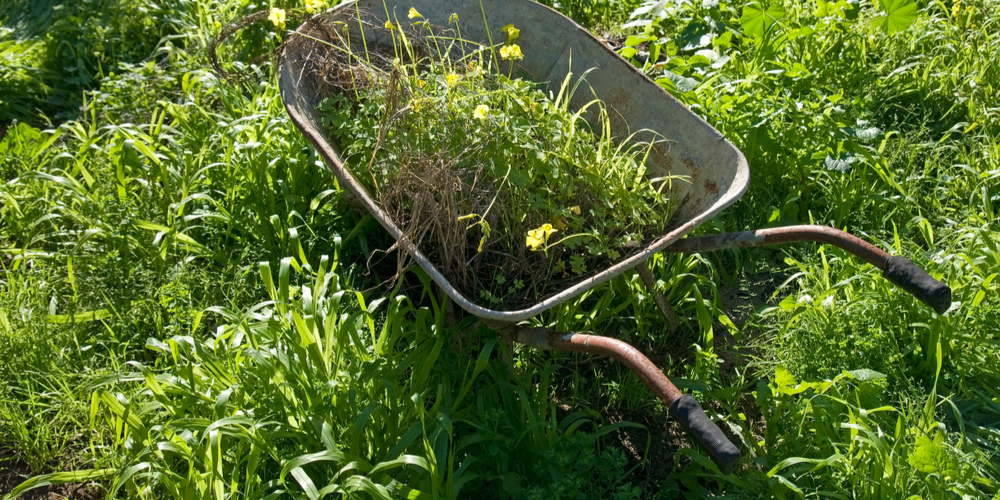When you take care of your flower bed or vegetable garden with passion, the last thing you want to experience is seeing it become a wild mess. It can be depressing if your flower bed is overgrown with grass!
But the truth is that weeds can grow anywhere, as long as there are conditions for them to thrive. Besides the perennial turf grasses that invade most gardens, you might also be with crabgrass and other invasive flowering plants.
Ideally, you should get rid of weeds as soon as you see them: acting sooner will prevent you (and your yard) from suffering later! No one likes wild landscapes where nature seems to take over messily.
After all, maintaining a tidy garden takes time, effort, and patience! We know that. And seeing all of your hard work going to waste isn’t the best thing that might happen to you. But we have good news: it is possible to solve the issue!
Keep reading to learn how to fix a flower bed overgrown with grass. Here, we’ll share everything you need to know to bring your garden back to an attractive state.
Our Tips for Fixing a Flower Bed Overgrown With Grass
For starters, we recommend you wear protective gear. Don’t skip putting on rubber gloves, especially when using a chemical herbicide.
Also, don’t forget to check the weather: it is best to choose a day with little wind and no rain to avoid the effect of the products you use becoming null.
Use a broad-spectrum herbicide but do so carefully: some products might also remove ornamental plants and damage beneficial insects that contribute to the health of your garden.
You can find granular and liquid products: choose the one that is better suited to your needs. Don’t forget to follow the instructions on the weed-killer label: avoid increasing the dosage as you’ll do more harm than good to your plants.
If you prefer using a liquid concentrate, ensure you mix it with water and apply it to your garden using a sprayer.
Consider adding adequate protection around your plants to prevent them from suffering: you can block the spray using a piece of cardboard or protect them with a bucket.
Also, use a sprayer you can control to avoid accidentally spilling the compound where you don’t want it to go.
Don’t forget to dig up the weeds after they appear dead and prevent the germination of new seeds by applying pre-emergent killers. These products will prevent weeds from growing in your garden. But be careful: they might also stop desirable plants from germinating.
Can You Use Organic Products?
If you are not comfortable using chemicals in your garden, organic products might be your solution. Of course, that comes with a downside. Indeed, even if organic products don’t harm other plants, they might take more time (and more applications).
You can spray diluted vinegar onto weeds to kill them or use propane torch tools to eliminate them from the roots, preventing further spread.
But if the infestation isn’t severe, you might have better results removing grass by hand. To do so, carefully loosen the soil and tug as many roots as possible. It might take some time, but the efforts will be worth it once you notice your flower bed is free of weeds.
Preparing A Flower Bed
Of course, to grow a flower bed, you must begin with a “clean canvas.” So, before thinking about transforming your garden, make sure you use our tips to remove old perennials and get rid of all weeds. Your garden bed should look clean.
Growing a flower bed contributes to improving the conditions in the soil and ensures optimal drainage. Add organic matter to the ground to enhance the nutrient content in the substrate and increase fertility.
You can use compost, leaf mold, peat, or manure: they all provide plants with the essential nutrients they need to thrive. But don’t forget to remove any rocks or gravel (you can do so by hand or use tools, depending on your yard’s size).
Flower Bed Overgrown With Grass: Conclusion
Also, ensure you plant species that do well in your region and your garden’s condition: account for the amount of sunlight that your flower bed receives each day and choose plants that will thrive under such circumstances.
Related Article: How to Prepare an Overgrown Garden for Planting?

